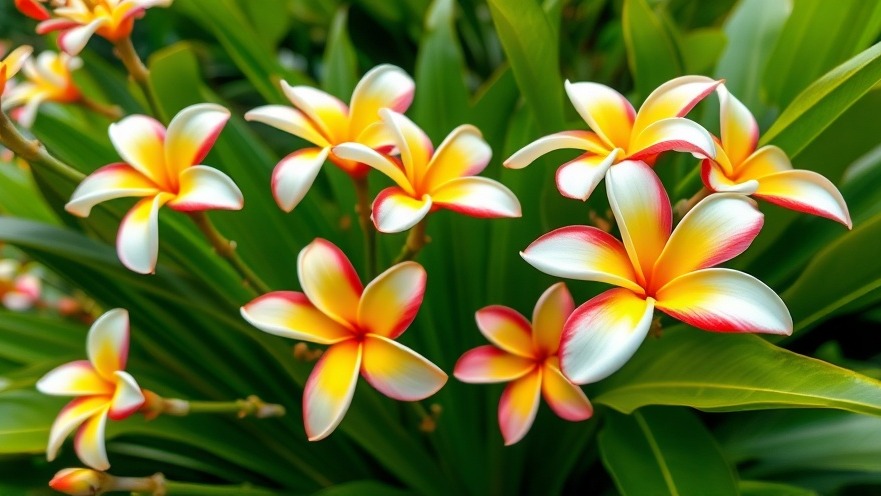
Understanding the Allure of Plumeria
Known popularly as frangipani, Plumeria captivates garden enthusiasts with its exquisite and aromatic flowers that evoke images of tropical paradises. Originating from regions like the Far East, Africa, and the Pacific, this plant brings a touch of exotic beauty to any setting. Traditions surrounding frangipani add depth to its allure; for example, Hawaiian leis made from its flowers symbolize friendship, while in Indonesia, the flower is often associated with remembrance due to its common planting in graveyards.
Optimal Growing Conditions for Plumeria
As a frost-sensitive shrub, Plumeria demands a warm, loving environment. While it may struggle outdoors in cooler climates like the UK, it thrives indoors, particularly in a well-lit conservatory. Homeowners should aspire for conditions with a minimum temperature of 10°C, ensuring the plant flourishes with proper care. Ideally, the plant needs to be placed in a sturdy pot with a mixture of soil-based compost, coarse grit, and perlite for optimum drainage.
Nurturing Your Plumeria Through the Seasons
When it comes to care, moderation is key. During the dynamic growth phase from spring through autumn, water the plant just enough to maintain soil moisture—overwatering can lead to root rot, a common plight for plumerias. A regular feeding schedule with liquid fertilizer will promote vibrant growth and flowering, but be sure to cut back in the winter months. Less water and no feed during this time work wonders for the plant’s resting period.
Propagation: Expanding Your Plumeria Collection
For eco-conscious gardeners who want to expand their collection, propagating Plumeria is a rewarding venture. Cuttings taken in spring can easily be rooted after a short drying period. Placing them in a mix of seed compost and vermiculite enhances drainage and prevents rot. Frequent monitoring and nurturing will usually result in new growth within a couple of months, giving gardeners the chance to cultivate their own traditions with these stunning plants.
Pruning: Maintaining Shape and Health
Pruning should be approached with caution, done primarily to maintain shape or remove leggy growth. Early spring is the best time for this task, ensuring the plant is prepared for the lush growth of the season ahead. Additionally, keeping an eye out for pests like red spider mites, particularly in drier conditions, is essential. By enhancing humidity around the plant, gardeners can effectively deter these nuisances, creating a healthier environment for the frangipani.
The Ecological Benefits of Growing Frangipani
Cultivating Plumeria is not just a matter of aesthetics; it can also enhance local biodiversity. By choosing to grow native and tropical plants, eco-conscious homeowners can create a conducive environment for pollinators such as bees and butterflies. Choosing sustainable gardening practices, such as composting and natural landscaping, when caring for your Plumeria, aligns with broader sustainability goals, making your home a beacon of eco-friendliness.
Benefits for the Eco-Conscious Gardener
In a world that is increasingly focused on sustainability, growing plants such as Plumeria not only beautifies our homes but reinforces our commitment to eco-friendly practices. The cultivation of these flowers promotes a connection with nature, encouraging gardeners to explore deeper sustainable practices such as water conservation and zero-waste gardening. By integrating Plumeria into your gardening repertoire, you also support a holistic approach to home design, creating spaces that harmonize with the environment.
Thus, exploring the world of Plumeria can lead to enriching practices that go beyond mere aesthetics. As you embark on this journey, consider the broader ecological implications of your gardening decisions, and relish the connections formed with nature in your own backyard.
To delve deeper into sustainable home design and eco-friendly gardening tips, visit leading gardening platforms or community gardening events. Engaging with local gardening communities can be an excellent step toward realizing your sustainable gardening ambitions!
 Add Row
Add Row  Add
Add 




Write A Comment